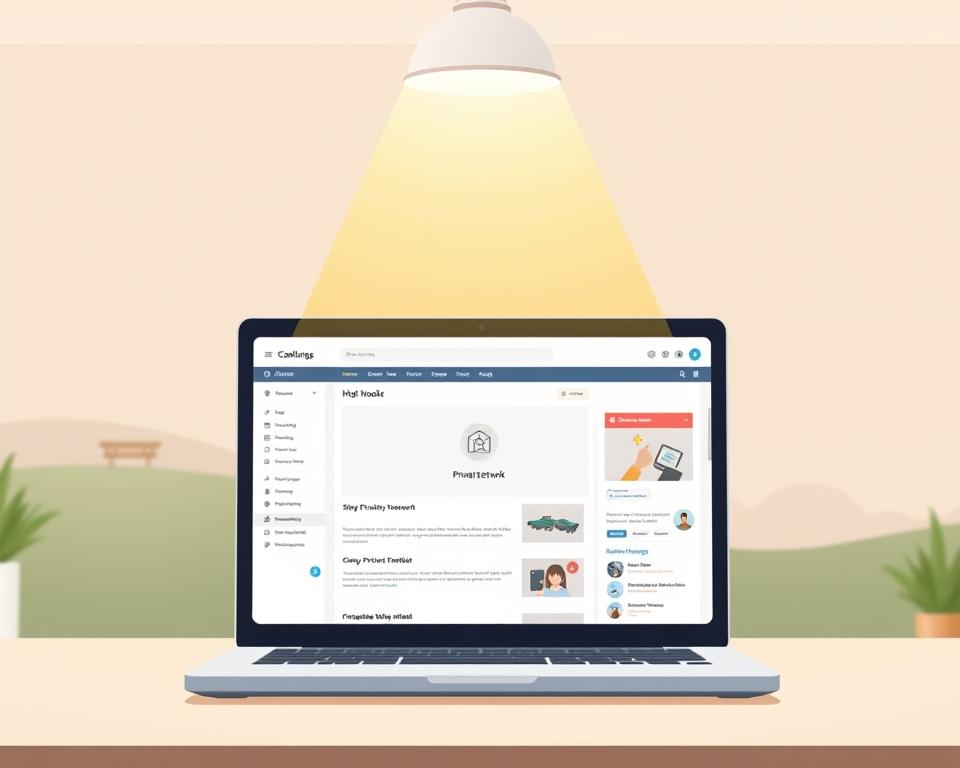Private Blog Network Link Overview
Did you hear that roughly three in five SEO pros leverage private blog network backlinks? A PBN’s main draw lies in how it can elevate a domain’s credibility. This can lead to better rankings in search engines. But, what does PBN in SEO really entail? While PBNs promise swift SEO wins, they present major perils. You risk incurring serious sanctions from Google. Let’s explore buy private blog network basics and why so many in SEO find them irresistible.
What is a Private Blog Network (PBN)?
Essentially, a PBN is a cluster of blogs designed to funnel link juice to a primary domain. It works by sending SEO value via backlinks from secondary sites to your core site. Many PBNs use expired domains, which retain some authority, to create a credible facade for search engines like Google.
What drives a PBN is simple. Marketers employ them to amplify their digital footprint. They achieve this through:
- Getting valuable backlinks to enhance rankings.
- Controlling the quality and relevance of these backlinks.
- Creating an ecosystem of interlinked blogs that appear organic.

Behind the Scenes of PBN Links
The tactic hinges on crafting backlinks that look legitimately earned. Each PBN link is engineered to deceive crawlers into thinking it’s a genuine vote of confidence.
It centers on selecting keyword-rich anchor text across a controlled array of blogs. Rapid uplift comes hand in hand with steep penalty prospects.
To be effective, backlinks must appear natural, with relevant content around them.
PBN Benefits
The chief allure of PBNs lies in their backlink control. One of the primary benefits is the immediate control over backlinks.
PBN expired domains, often rich in authority, provide a unique opportunity to create strong backlinks.
They empower you to weave keyword-optimized anchors across your network.
Hazards of Using PBNs
Yet, these tactics are fraught with peril. Primary among these is the threat of manual or algorithmic penalties from Google.
Why Some SEOs Choose PBNs over Traditional Link Building
Guest posting and manual outreach take time and resources. They promise speed and predictability in link acquisition.
How to Run a PBN Safely
Avoiding footprints is critical in PBN upkeep. Begin with thorough due diligence when purchasing expired domains.
Identifying PBN Links on Your Website
Spotting PBN links on your site is key to keeping your domain reputation healthy.
| Indicators of PBN Links | Description |
|---|---|
| Low-Quality Domains | Links from domains with poor authority or less than optimal rankings. |
| Irrelevant Content | Links embedded in content that does not match your site’s niche. |
| Suspicious Anchor Text | Repetitive or irrelevant anchor text patterns. |
| Thematic Similarity | Lack of a coherent theme among linking pages and domains. |
How to Disavow Private Blog Network Links
- Identify harmful PBN backlinks through thorough analysis.
- Create a disavow file correctly, listing specific URLs or domains to disavow.
- Upload the disavow file to Google Search Console.
Alternatives to Private Blog Networks
Consider guest posting for genuine backlinks.
Clearing Up PBN Myths
Many assume PBNs are risk-free quick fixes.
Where PBNs Are Headed
| Factor | PBNs | Future SEO Practices |
|---|---|---|
| Content Quality | Low emphasis on genuine content | High emphasis on high-quality, valuable content |
| Risk Factor | High risk of penalties | Lower risk with authentic practices |
| User Engagement | Limited engagement | Enhanced user interaction and loyalty |
| Sustainability | Unsustainable in the long term | Focus on sustainable growth |
To Summarize
Ultimately, PBN use can jeopardize your long-term SEO success.


